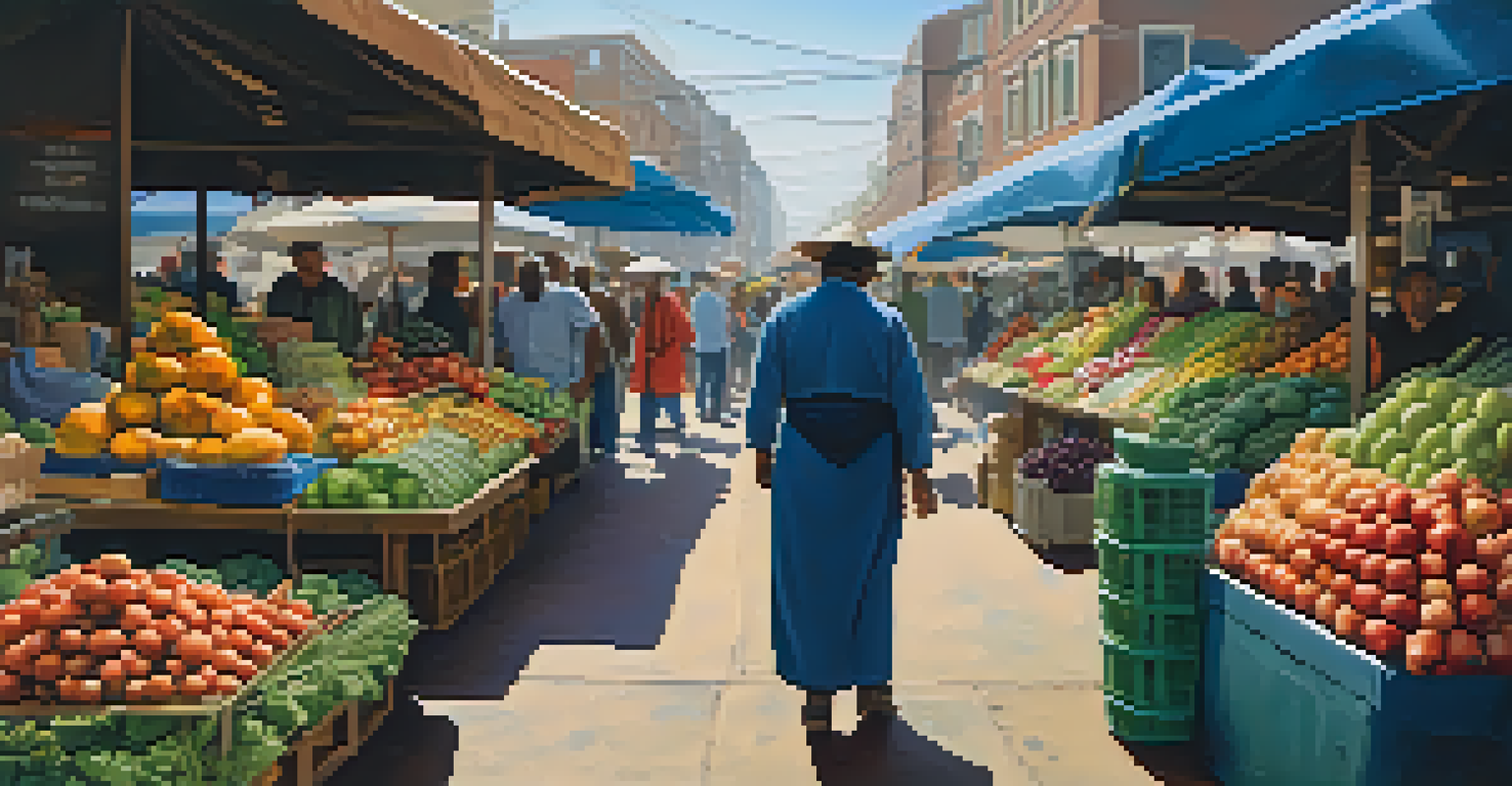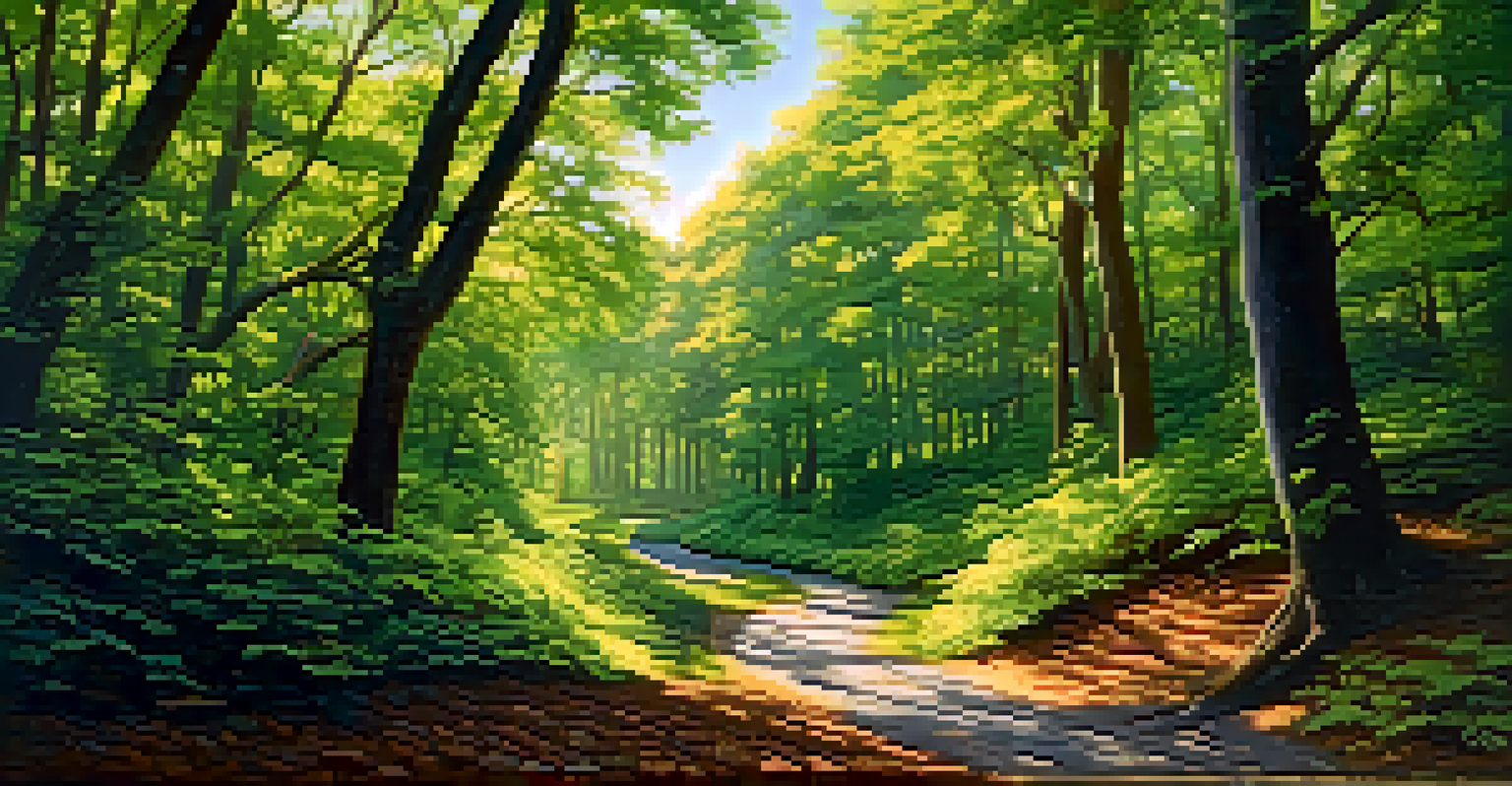The Rule of Thirds: A Guide for Travel Photography Success

Understanding the Rule of Thirds in Photography
The Rule of Thirds is a fundamental principle in photography that helps you compose your shots more effectively. Imagine dividing your frame into a grid of nine equal parts with two horizontal and two vertical lines. This technique encourages you to position key elements along these lines or at their intersections, creating a more balanced and engaging image.
Photography is the story I fail to put into words.
By using the Rule of Thirds, you can guide the viewer's eye to the most important parts of your photo. Instead of placing your subject directly in the center, which can feel static, this rule adds dynamism and interest to your composition. Think of it like a well-balanced meal, where each ingredient plays a vital role in the overall flavor.
While the Rule of Thirds is a great starting point, remember that rules are meant to be bent. As you gain confidence in your travel photography, you may find moments where breaking this rule results in striking images. However, understanding it thoroughly will give you a solid foundation to build upon.
How to Apply the Rule of Thirds When Traveling
Applying the Rule of Thirds during your travels begins with being mindful of your surroundings. Look for natural lines in the landscape, such as horizons, roads, or rivers, and align them with the grid. For instance, if you're photographing a sunset over the ocean, position the horizon along the top or bottom third of the frame for a more captivating shot.

Also, consider your subjects. When capturing people or landmarks, place them at one of the intersection points. This technique not only creates a focal point but also allows for more negative space, which can enhance the overall composition. Think of it as giving your subject room to breathe within the frame.
Master the Rule of Thirds
Understanding and applying the Rule of Thirds can significantly enhance the composition and visual appeal of your travel photographs.
As you explore new locations, practice taking multiple shots with varying compositions. This experimentation can lead to surprising results and help you become more comfortable with the Rule of Thirds. Over time, you'll develop an instinct for when and how to apply this rule effectively.
Creating Depth with the Rule of Thirds
One of the most exciting aspects of the Rule of Thirds is its ability to create depth in your photos. When you position foreground elements in one of the thirds while keeping the background in another, it draws the viewer into the scene. Imagine a winding path leading through a stunning landscape; placing the path in a third of the frame can make the image feel more three-dimensional.
Composition is the strongest way of seeing.
Additionally, using layers can enhance the storytelling aspect of your travel photographs. By incorporating elements in the foreground, middle ground, and background, you can create a sense of journey and exploration. This technique makes the viewer feel as if they are right there with you, experiencing the adventure firsthand.
Remember, depth can also be achieved through lighting and shadows. A well-lit subject positioned according to the Rule of Thirds can stand out against a softly blurred background, making your image pop. Experiment with different times of day to see how light influences your compositions.
Examples of the Rule of Thirds in Travel Photography
Let's look at some practical examples of the Rule of Thirds in action. A classic travel shot could feature a famous landmark, like the Eiffel Tower, positioned along one vertical line while the sky occupies the upper third. This setup draws the viewer's attention to the tower while providing a sense of context and scale.
Another example could be a market scene, where a vendor is placed at an intersection point, surrounded by colorful produce that fills the remaining space. This composition not only highlights the vendor but also captures the vibrant atmosphere of the market, making it feel lively and inviting.
Flexibility in Composition
While the Rule of Thirds provides a solid foundation, embracing creativity and breaking the rule can lead to striking and unique images.
As you review your own travel photos, try to identify which ones adhere to the Rule of Thirds and which ones don’t. This analysis can provide insight into your compositional choices and inspire you to apply the rule more consciously in future shoots.
Common Mistakes with the Rule of Thirds
Even seasoned photographers can fall into common pitfalls when applying the Rule of Thirds. One mistake is placing all elements strictly along the grid, leading to a rigid and unnatural composition. Instead, allow some flexibility in positioning; the key is balance, not perfection.
Another frequent error is neglecting the background. A well-placed subject can be overshadowed by a cluttered or distracting background. Always scan your surroundings and make adjustments to ensure that the background complements rather than competes with your main focus.
Lastly, remember that the Rule of Thirds is a guideline, not a strict rule. Relying too heavily on it can stifle your creativity. Embrace spontaneity and trust your instincts, allowing for a mix of traditional and unconventional compositions in your travel photography.
Tools to Help You Master the Rule of Thirds
Many modern cameras and smartphones come equipped with grid overlays, making it easier than ever to apply the Rule of Thirds. These grids can be activated in your camera settings and will appear on your screen, guiding you as you frame your shots. It's like having a little coach right there with you!
In addition to built-in grids, there are also various photography apps that allow you to experiment with the Rule of Thirds before taking your shot. These apps often provide customizable grids and overlays, letting you visualize different compositions. This can be particularly helpful when scouting locations or planning your shots.
Use Tools for Better Framing
Modern cameras and photography apps equipped with grid overlays can help you effectively apply the Rule of Thirds in your shots.
Lastly, consider using editing software to adjust your compositions post-shoot. Many photo editing tools allow you to crop your images according to the Rule of Thirds, helping you refine your work. This way, you can perfect your shots even after you've returned home from your travels.
Final Thoughts on the Rule of Thirds in Travel Photography
Mastering the Rule of Thirds can significantly enhance your travel photography, making your images more compelling and visually appealing. By thoughtfully composing your shots, you can create stories that resonate with your viewers. Remember, the goal is to evoke emotion and transport them to the places you've visited.
As you practice this technique, don’t forget to have fun and experiment with different styles. Travel photography is about capturing unique moments and experiences, so let your creativity shine. The more you shoot, the more you'll understand how the Rule of Thirds can work for you.

In the end, the Rule of Thirds is just one of many tools in your photography toolbox. Use it as a guide, but don’t be afraid to explore beyond its boundaries. With time, patience, and practice, you’ll develop a distinctive style that reflects your personal journey through the lens.